The Juno Mission Has Been Revealing Angles Of Jupiter We’ve Never Seen Before. This Photo Shows Jupiter’s

The Juno mission has been revealing angles of Jupiter we’ve never seen before. This photo shows Jupiter’s northern temperate latitudes and NN-LRS-1, a.k.a. the Little Red Spot (lower left), the third largest anticyclone on Jupiter. The Little Red Spot is a storm roughly the size of the Earth and was first observed in 1993. As an anticyclone, it has large-scale rotation around a core of high pressure and rotates in a clockwise direction since it is in the northern hemisphere. Jupiter’s anticyclones seem to be powered by merging with other storms; in 1998, the Little Red Spot merged with three other storms that had existed for decades. (Image credit: NASA/JPL-Caltech/SwRI/MSSS/Gerald Eichstaedt/John Rogers; via Bad Astronomy)
More Posts from Drunkscience4u and Others

Researchers at King’s College London found that the drug Tideglusib stimulates the stem cells contained in the pulp of teeth so that they generate new dentine – the mineralised material under the enamel.
Teeth already have the capability of regenerating dentine if the pulp inside the tooth becomes exposed through a trauma or infection, but can only naturally make a very thin layer, and not enough to fill the deep cavities caused by tooth decay.
But Tideglusib switches off an enzyme called GSK-3 which prevents dentine from carrying on forming.
Scientists showed it is possible to soak a small biodegradable sponge with the drug and insert it into a cavity, where it triggers the growth of dentine and repairs the damage within six weeks.
The tiny sponges are made out of collagen so they melt away over time, leaving only the repaired tooth.
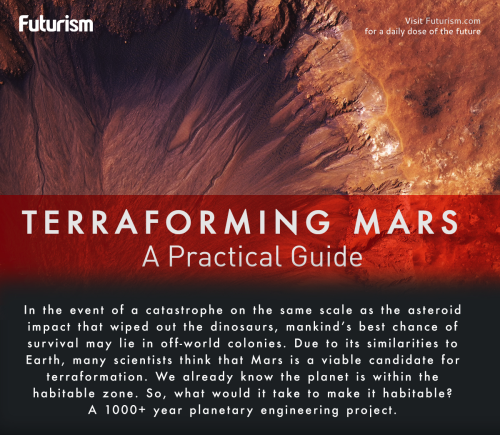
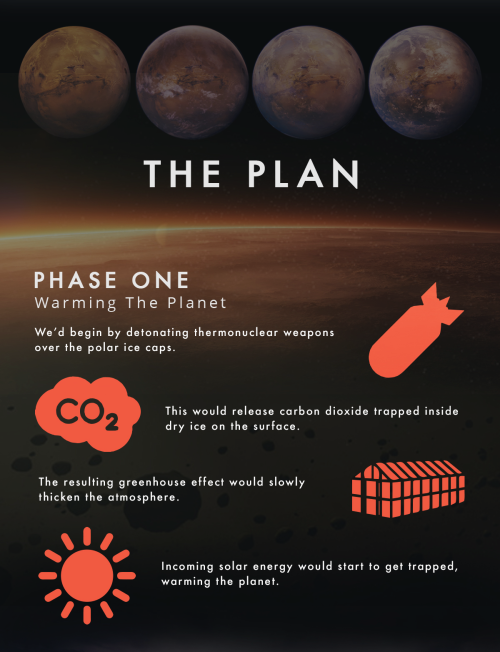

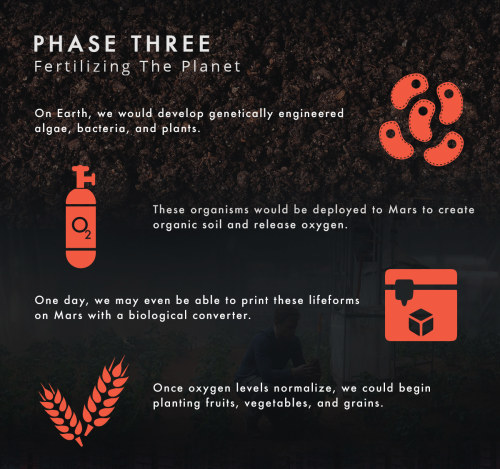
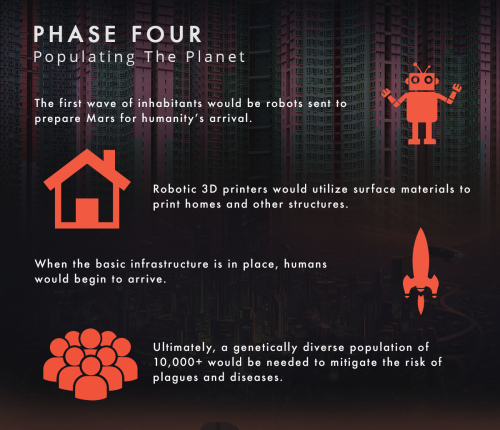
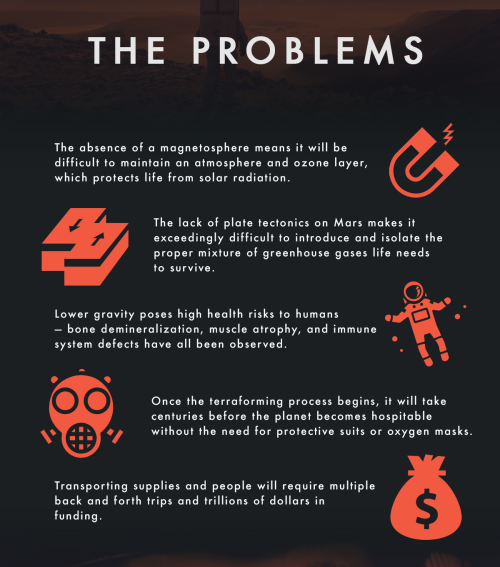
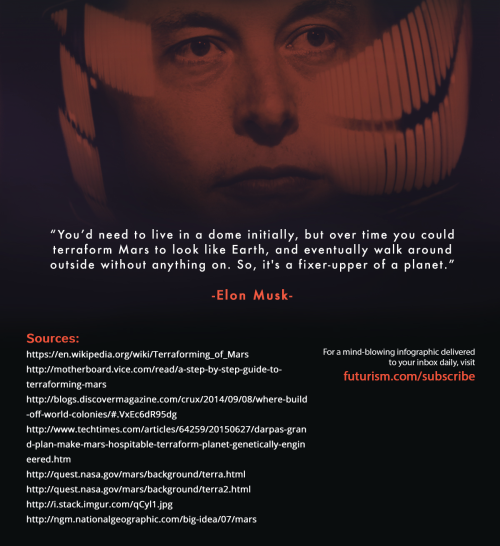
https://futurism.com/images/terraforming-mars-practical-guide
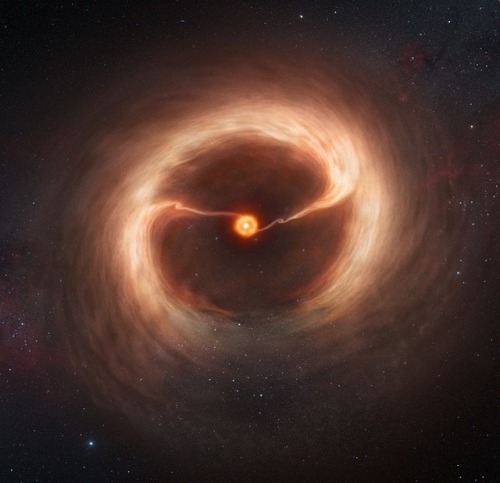
Disc of gas around HD 142527
This artist’s impression shows the disc of gas and cosmic dust around the young star HD 142527. Astronomers using the Atacama Large Millimeter/submillimeter Array (ALMA) telescope have seen vast streams of gas flowing across the gap in the disc. These are the first direct observations of these streams, which are expected to be created by giant planets guzzling gas as they grow, and which are a key stage in the birth of giant planets.
Credit: ESO / Atacama Large Millimeter/submillimeter Array









Seven planets, including three habitable ones, found around ultra-cool dwarf star
“Unlike the worlds in our Solar System, each one should be tidally locked to the parent star, meaning that the same side always sees “day” while the opposite side resides in eternal night. Yet life on Earth began in the oceans, and of these seven worlds, the fourth, fifth and sixth might all have conditions to support liquid oceans or lakes – if the atmosphere is favorable – bathed in eternal sunlight.”
What is it that makes our Solar System special? It’s Earth, of course. A rocky planet of the right mass and composition, the right distance from our Sun, the right atmosphere, the surface oceans, and all the life that’s ensued is what makes us special. Not just special, but unique, at least among the planets we’ve found so far. But there are other planetary systems out there with Earth-like worlds. Similar to Earth in mass, size, temperature and many other conditions, these might represent planets where life similar to what we find here arose. For the first time, we’ve found a planetary system with not just one Earth-like, potentially habitable world, but three!
Come meet the worlds around the ultra-cool star TRAPPIST-1, and learn what the prospects are for these worlds being truly Earth-like.

Old but gold 💛

Please subscribe, like, comment, and donate! Next episode March 18. 2017. Starring: Candice Lola Directed by Rebecca Berger Produced by Rebecca Berger and Candice Lola Written by Candice Lola Editing, Color, Sound Design by Rebecca Berger Animation by Rachael K McDonald Links: Music: http://ift.tt/1JICaNj and http://ift.tt/2lquxdO http://ift.tt/2lINlQJ http://ift.tt/2lqtjzr http://ift.tt/2lIL08B http://ift.tt/2lqvuCQ (Donations are always welcome!) http://ift.tt/2lITyw7 http://ift.tt/2lqvQJO

There will be drink. There will be science. There will be funny.
New Youtube series my friend and I are putting together. Come follow the facebook and youtube for more information!!!
-
 nerdvillain reblogged this · 6 months ago
nerdvillain reblogged this · 6 months ago -
 calypsomode liked this · 2 years ago
calypsomode liked this · 2 years ago -
 ggokotta reblogged this · 3 years ago
ggokotta reblogged this · 3 years ago -
 rudeteens reblogged this · 3 years ago
rudeteens reblogged this · 3 years ago -
 bloodmoses reblogged this · 3 years ago
bloodmoses reblogged this · 3 years ago -
 bloodmoses liked this · 3 years ago
bloodmoses liked this · 3 years ago -
 techjum reblogged this · 4 years ago
techjum reblogged this · 4 years ago -
 avatararahant reblogged this · 6 years ago
avatararahant reblogged this · 6 years ago -
 avatararahant liked this · 6 years ago
avatararahant liked this · 6 years ago -
 thescientificvirgo reblogged this · 7 years ago
thescientificvirgo reblogged this · 7 years ago -
 dhens9556 liked this · 7 years ago
dhens9556 liked this · 7 years ago -
 funcoolmathgames reblogged this · 7 years ago
funcoolmathgames reblogged this · 7 years ago -
 paradiseismade reblogged this · 7 years ago
paradiseismade reblogged this · 7 years ago -
 dadcelo liked this · 7 years ago
dadcelo liked this · 7 years ago -
 the-punforgiven liked this · 7 years ago
the-punforgiven liked this · 7 years ago -
 nearina reblogged this · 7 years ago
nearina reblogged this · 7 years ago -
 nearina liked this · 7 years ago
nearina liked this · 7 years ago -
 the-don-crow reblogged this · 8 years ago
the-don-crow reblogged this · 8 years ago -
 the-don-crow reblogged this · 8 years ago
the-don-crow reblogged this · 8 years ago -
 sphynx823 liked this · 8 years ago
sphynx823 liked this · 8 years ago -
 youracil-blog reblogged this · 8 years ago
youracil-blog reblogged this · 8 years ago -
 saltykittenchild reblogged this · 8 years ago
saltykittenchild reblogged this · 8 years ago -
 malgudinights reblogged this · 8 years ago
malgudinights reblogged this · 8 years ago -
 leabhars reblogged this · 8 years ago
leabhars reblogged this · 8 years ago -
 malgudinights liked this · 8 years ago
malgudinights liked this · 8 years ago -
 queermika reblogged this · 8 years ago
queermika reblogged this · 8 years ago -
 paradiseismade liked this · 8 years ago
paradiseismade liked this · 8 years ago -
 risahdont reblogged this · 8 years ago
risahdont reblogged this · 8 years ago -
 roxyspamcake liked this · 8 years ago
roxyspamcake liked this · 8 years ago -
 angry-velociraptor reblogged this · 8 years ago
angry-velociraptor reblogged this · 8 years ago -
 captain-bumble liked this · 8 years ago
captain-bumble liked this · 8 years ago -
 life-as-a-gummy-bear liked this · 8 years ago
life-as-a-gummy-bear liked this · 8 years ago -
 mellifluous-jaim reblogged this · 8 years ago
mellifluous-jaim reblogged this · 8 years ago -
 softgaybees reblogged this · 8 years ago
softgaybees reblogged this · 8 years ago -
 arna-s liked this · 8 years ago
arna-s liked this · 8 years ago -
 reducetoabsurdness reblogged this · 8 years ago
reducetoabsurdness reblogged this · 8 years ago -
 shipsandpolitics reblogged this · 8 years ago
shipsandpolitics reblogged this · 8 years ago -
 shipsandpolitics reblogged this · 8 years ago
shipsandpolitics reblogged this · 8 years ago -
 shipsandpolitics liked this · 8 years ago
shipsandpolitics liked this · 8 years ago -
 unadorned-vellichor liked this · 8 years ago
unadorned-vellichor liked this · 8 years ago -
 germijermiv-blog reblogged this · 8 years ago
germijermiv-blog reblogged this · 8 years ago -
 heckingoof reblogged this · 8 years ago
heckingoof reblogged this · 8 years ago -
 cferoc reblogged this · 8 years ago
cferoc reblogged this · 8 years ago -
 littleblackcha0s liked this · 8 years ago
littleblackcha0s liked this · 8 years ago
The official page of Drunk Science! An enthusiastic host performs simple experiments and then humorously explains the science behind the result, all while visibly drunk.
126 posts

